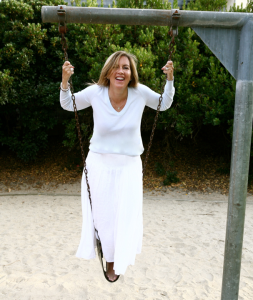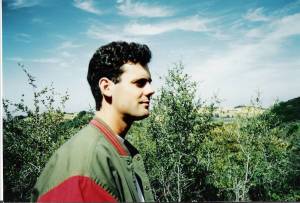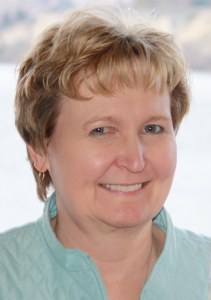Adoption Ambiguity in Adoptive Children
Adoption ambiguity, a term introduced by Pauline Boss in the 1970s, encapsulates the intricate emotional landscape adoptive children navigate as they grapple with their identities, relationships, and sense of belonging. Nancy Verrier, in her seminal work “The Primal Wound: Understanding the Adopted Child” (1991), further sheds light on the profound impact of adoption on children. In this article, we will explore adoption ambiguity, draw insights from experts in the field, and highlight the relevance of Verrier’s work in understanding the complexities of adoptive experiences.
Understanding Adoption Ambiguity: Adoption ambiguity is a multifaceted phenomenon that encompasses the unresolved emotions and challenges adopted children face. Parents need to acknowledge and address these complexities to provide a nurturing environment for these children. Let’s delve into expert perspectives and the insights shared in “The Primal Wound“:
- Ambiguous Loss and Adopted Children:
- Verrier’s work emphasizes the concept of the primal wound, which refers to the profound loss experienced by adoptees due to the separation from their biological mothers.
- This primal wound can manifest as a deep-seated sense of loss, grief, and disconnection that adoptive children carry throughout their lives.
- Self-Sabotage and Adoption Ambiguity:
- Adoptive children may exhibit self-sabotaging behaviors as a coping mechanism for the unresolved emotions stemming from adoption ambiguity.
- Issues such as fear of rejection, trust and control struggles, identity conflicts, and attachment trauma can contribute to self-sabotage in adoptive children.
Insights on Supporting Adoptive Children: Drawing from expert advice and Verrier’s insights, here are key strategies for parents to support their adoptive children through the challenges of adoption ambiguity:
- Establishing Open Communication:
- Foster open and honest communication with your child to create a safe space for discussing their feelings and experiences.
- Encourage dialogue about adoption-related topics while respecting your child’s emotions and perspectives.
- Building Trust and Security:
- Prioritize building a foundation of trust and security in your relationship with your adoptive child.
- Demonstrate consistent support, empathy, and understanding to help your child feel secure in their identity and relationships.
- Seeking Professional Guidance:
- Consider seeking guidance from adoption professionals, therapists, or support groups familiar with adoption-related issues.
- Professional assistance can offer valuable insights and strategies tailored to address the specific needs of your adoptive child.
- Embracing Education and Resources:
- Educate yourself about adoption ambiguity and its impact on adoptive children by exploring resources such as “The Primal Wound” and other relevant literature.
- Engage with adoption communities, workshops, and online resources to gain knowledge and connect with others who share similar experiences.
The journey of adoptive children is characterized by unique challenges and emotional complexities that require sensitivity, understanding, and support. By integrating insights from experts and works like “The Primal Wound” by Nancy Verrier, parents can cultivate a nurturing environment that empowers their adoptive children to navigate their identities and relationships with resilience. As illuminated by Verrier and other experts, adoption ambiguity underscores the significance of acknowledging and addressing the deep-seated emotions and challenges inherent in adoptive experiences. Empathy, communication, and a commitment to learning can create a supportive space where adoptive children can flourish and embrace their individual journeys.
Here are some recommended books and resources for parents looking to deepen their understanding of adoption-related issues and support their adoptive children:
Books:
- “The Primal Wound: Understanding the Adopted Child” by Nancy Verrier
- “The Connected Child: Bring Hope and Healing to Your Adoptive Family” by Karyn B. Purvis, David R. Cross, and Wendy Lyons Sunshine
- “Twenty Things Adopted Kids Wish Their Adoptive Parents Knew” by Sherrie Eldridge
- “Parenting the Hurt Child: Helping Adoptive Families Heal and Grow” by Gregory Keck and Regina Kupecky
- “Being Adopted: The Lifelong Search for Self” by David M. Brodzinsky, Marshall D. Schechter, and Robin Marantz Henig
- “In Their Own Voices: Transracial Adoptees Tell Their Stories” by Rita J. Simon and Rhonda M. Roorda
Online Resources:
- Adoption.com: A comprehensive online resource offering articles, forums, and community support for adoptive families.
- Child Welfare Information Gateway: Provides resources on adoption-related topics, including parenting tips, support services, and legal information.
- North American Council on Adoptable Children (NACAC): Offers educational resources, training, and advocacy for adoptive families.
- Adoptive Families Magazine: Features articles, expert advice, and personal stories related to adoption and parenting.
- Adoption Network: Provides support, education, and resources for adoptive families, birth families, and adoptees.
These books and online resources can offer valuable insights, guidance, and support for parents navigating the complexities of adoption and seeking to create a nurturing environment for their adoptive children.









